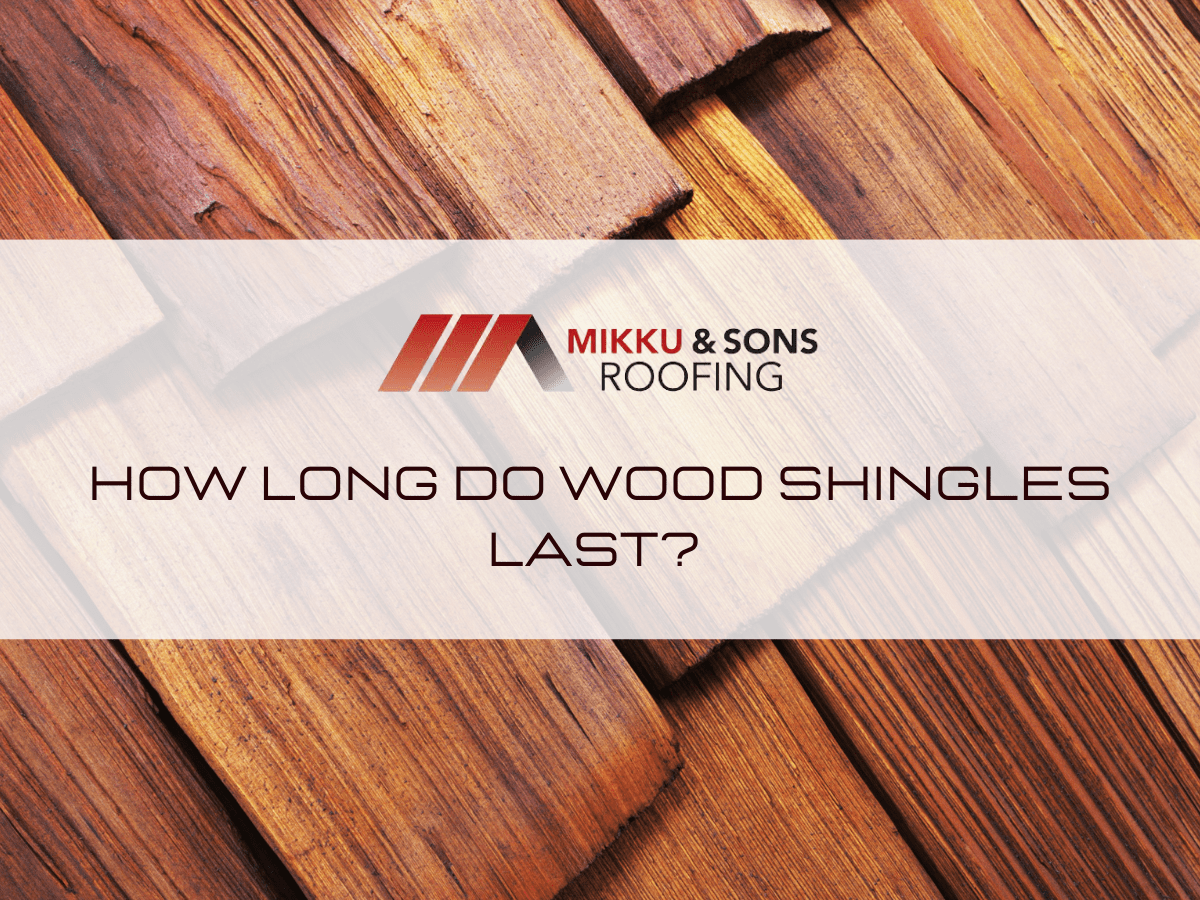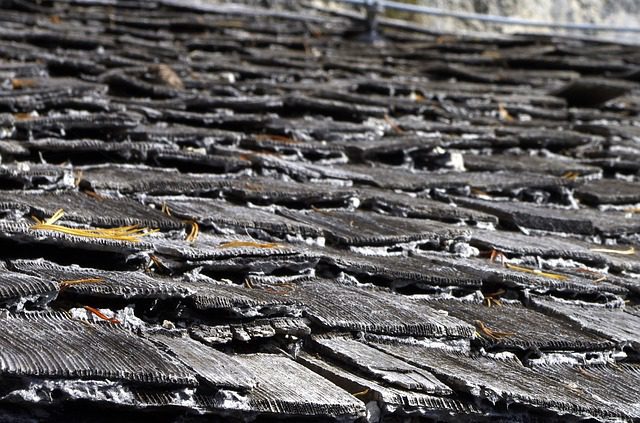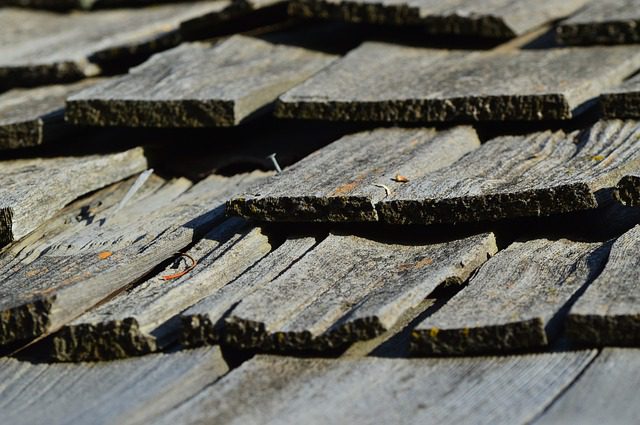

Wood shingles are thin, tapering pieces of wood that are primarily used to protect roofs and walls from the elements. Wood shingles can last for up to 30 years with regular maintenance to keep them in good condition.
Cedar is a popular choice for wood shingles because it is resistant to rot and insects. Wood is natural and susceptible to damage which raises the concern of its use as a roofing option.
To answer the question, 'How long do wood shingles last?', this article explains the benefits and downsides of using wood shingles on a roof.
1. Underlayment
Over your roof deck, an underlayment is a water-resistant or waterproof layer. In order to provide an additional barrier against rain, snow, and ice, underlayment is placed beneath all other roofing materials.
An underlayment purchase may extend the lifespan of your roof.
To combat the harsh winter weather in the northeastern United States, for example, quality waterproof underlayment is highly recommended.
2. Ventilation
Additionally, each home has its own roof ventilation system.
A properly ventilated attic can extend the time between roof replacements.
In the winter, snow melt and ice damming are prevented by a ventilated roof.
In addition, proper attic ventilation prevents the growth of mildew and decay in your roofing materials due to excessive heat and moisture.
Ridge vents and eave vents, which are nearly undetectable, are essential for proper ventilation.
The slope, size, and architectural characteristics of your roof may necessitate additional ventilation solutions like power vents. Ask your roofing contractor about the best ventilation choices for your home.
3. Installation
Certain roofing products have special installation requirements that ensure their long-term viability. Your roof's lifespan is directly related to the competence and skill of your roofer.
To get the greatest results, go with an installer who is familiar with your specific roof type, as well as the best procedures for installing it, whether it's a gabled, cross-gabled, or flat roof.

Wood shingles are exceptionally long-lasting, but they will eventually succumb to wear and tear. You should be aware of three early symptoms of deterioration if you have wood shingles on your roof.
By changing wood shingles as necessary, you can prevent small problems from becoming major ones.
1. Curling or cupping
When they are originally put, wood shingles are perfectly flat against the roof. A wood shake roof's aesthetics degrade with time and exposure to the elements.
Some weathering on a wood shake roof is typical and even desired, as it lends the roof its distinctive character. If you like a new, uniform appearance, you might want to replace your wood shingles with synthetic ones.
However, when the wood shingles degrade, the shingle corners will begin to lift.
Curling or cupping is the term for this. The first sign that your roof is in need of repair is a shingle that has begun to curl.
Having an oddly curled shingle here and there isn't going to be a big deal. A roofing system might be compromised by excessive curvature of any one shingle or even a few curled ones.
2. Sharp splits
Over time, even wood shingles may develop cracks. Exactly like curling, this is perfectly normal.
Some of the wood shake shingle's cracks are shallow and do not go all the way through. The shingle's performance is unaffected by these cracks, which are also known as checks.
It's called a split when a shingle has a crack that goes all the way through.
Concerning the split wood shingles. Split shingles can be caused by one of two things:
3. Rotting edges
The proper evaporation of rainwater from the roof is hampered by shade. Mold, lichen, and other microorganisms will eventually build up around the bottom edges of cedar shakes as a result.
Look out for rotted wood and other telltale indications. Even if only a small portion of your roof has rotted, you may want to replace the entire roofing system because rot spreads fast.
For this reason, we recommend that you have a professional roofing firm evaluate your wood roof on a regular basis.

Without a roof, your home's efforts to protect you would be in vain. Shelter from the cold, heat, wind, hail and rain are all made possible by having a roof over your head.
You'd be exposed to all of this, as well as the associated dangers if you didn't have a roof.
As a result, maintaining the health of your roof is very crucial. There are times when damage does occur, and when this happens, your roof's structural integrity is weakened.
Shingles are an important part of your roof's maintenance if you want to keep it in good shape. As their condition worsens, it may be an indication of more serious problems to come.
Signs of Shingle Roof Deterioration
Look for any indicators of damage or light sources coming into your home from your attic's interior. The more you wait, the greater the damage will become, so don't delay.
After you've checked the inside, you'll need to climb up on your roof to examine the shingles and flashing on the outside of the roof.
To some, this may come as a surprise. Cedar shingles do not degrade on their own. These items can wear out over time if they are not properly maintained, but they will not degrade.
The degradation of cedar shakes is largely due to the presence of moisture. Moisture damage to cedar shake roofs can shorten their lifespan by many years.
Mold, mildew, moss, and algae are some of the most common fungi and mosses that can grow on roof shakes. Wood shingles can be infiltrated by organisms that hold on to moisture for long periods of time.
Moisture seeping into the shakes over time will cause them to break down and degrade over time. As a result of this, their strength will be diminished, and they may even break or collapse.
On the other hand, there's always the possibility of natural degradation. While normal maintenance can help slow down the pace of deterioration, it cannot halt a completely routine maintenance routine.
A cedar shingle roof's lifespan can be shortened by a variety of factors, including insect infestation, aging, and extreme temperatures.

Now that you know what to look for regarding signs of shingle roof deterioration, it's important to understand the underlying causes. Here are a few of the most common causes of shingle roof deterioration.
1. Intense Winds
Your roof's shingles might be ripped off by strong winds. If nothing else, they'll have to contend with the fact that they'll be vulnerable to damage.
It's important to inspect your roof after a severe storm since wind might cause much more damage. If the storm is powerful enough, your entire roof may be in jeopardy. The margins of your roof are the most vulnerable.
Intense winds can't be avoided, but you can be proactive by having an inspection done afterward.
2. Excessive Sunlight
The warmth of the sun is something that we are all drawn to. It has a relaxing effect and lifts your spirits. However, overexposure to the sun's rays will eventually degrade your roof.
One of the most common causes of shingle deterioration is exposure to the sun's UV rays and constant heat. If you reside in a region with a lot of UV light or radiation, the strength of the sun will accelerate the deterioration of your shingles.
When it's time to replace your roof, and you're worried about the sun beating down on it, consider lighter-colored shingles. The slower the shingles degrade, and the less heat they absorb, the lighter the color of your roof.
3. Poor Attic Ventilation
Additionally, heat from the interior of your house can degrade your shingles as well.
Heat builds up in an unventilated attic, eventually rising to the roof. The more heat that accumulates in your attic, the longer it will take for it to dissipate.
Underside shingles can heat up if there is a lot of built-up heat in the area. Prematurely curled shingles are the end result.
Check your attic ventilation to avoid these issues, and consider upgrading your roof in order to get the most benefit out of it.
4. Rain, Snow, Hail, or Ice
Constant rain, snow, hail, or ice storms will cause damage to your shingles, so it's not a surprise. The shingles can be damaged by the pressure and impact, but they may also be damaged over time by the dampness.
Mold and mildew, rotting, and insulating damage are all caused by standing water. Ensure your shingles are in good condition all year round to minimize damage from rain, snow, hail, and ice.
The re-freezing and re-freezing of ice can cause serious structural damage in the winter, so be aware of these dangers and take extra precautions.
5. Trees or bushes
Excessive trees or bushes are another typical cause of shingle damage. In the absence of regular care, your tree limbs will eventually extend above the eaves of your home. The shingles might be punctured by the limbs when the weather is really harsh.
Rainwater can back up in your gutters because of leaves piling up on your roof in the fall. The water will eventually soak into the shingles if it isn't drained. Rot and structural instability are the results.
This is wonderful news because it's preventable.
Pruning and gardening low-hanging trees are essential. Gutter cleaning is a regular maintenance task that should be performed on a regular basis to maintain good drainage.
6. Lichen
To begin with, it's important to understand that lichen is an alga or moss hybrid.
It will grow if you don't maintain it. Shingles become more prone to decay when they have lichen on them.
Moisture retention isn't the issue here, but rather a lack of ventilation. Instead, the lichen's acidity is to blame. The shingles on your roof will be more vulnerable to damage if they are exposed to high quantities of acid.
When it comes to cedar roof deterioration, ultraviolet light from the sun is a big contributor. Cedar shingles are susceptible to cupping, wood rot, erosion, and splitting in addition to decomposition.
| Expected lifespan: Wood shingles | 30+ years |
| Causes of deterioration | Fix |
| 1. Intense Winds | Proper installation and maintenance: Fix loose shingles |
| 2. Excessive Sunlight | Use reflective barriers |
| 3. Poor Attic Ventilation | Proper roof construction |
| 4. Rain, Snow, Hail, or Ice | Clear the roof off debris |
| 5. Trees or bushes | Cut any overhanging branches |
| 6. Lichen | Proper roof maintenance |
Certain common roofing practices for modern installations should be avoided in re-roofing a building. These practices interfere with the proper drying of the shingles or result in a sloppy installation that will accelerate deterioration.
Some of the measures include:
1. Avoid painting shingles after installation.
The shingles will deform if the paint has a fast-drying solvent in it. New shingles should be dipped before installation in order to maintain the same tension throughout the wood fibers.
2. Regular Maintenance
If the roof is regularly inspected, loose or damaged shingles can be replaced before they cause major water damage. Wooden shingles can last for many years if they are well-maintained and properly repaired as needed.
Shingles, flashing, sheathing, and gutters all need to be checked for damage and cleaned regularly. Every few years, the roof will need to be re-coated if it has been treated with fungus, stain, or renewing oil which is about every 4-5 years.
The following measures are good during routine roof maintenance:
3. Plywood or composite materials should not be used to repair deteriorating roof sheathing
Plywood and other modern composition boards can delaminate or degrade if moisture or leakage goes unnoticed. Some full-size lumber might have to be custom-ordered so that new shingles can rest on a level surface on top of the old sheathing.
Work should be done in parts to avoid roof collapse if considerable amounts of sheathing must be removed and replaced.
4. Use of staples should be avoided
Using pneumatic staple guns to attach shingles is a popular method that can result in damage to the shingles. An alternative would be to use corrosion-resistant nails.
Pneumatic nail guns, with the correct nails and the correct pressure, worked well and decreased the stress on shingles from hammers.
FAQs
The structural stability of your roof depends on regular roof inspections. A roof inspection should be performed at least twice a year: before the winter chill sets in and after.
For additional assurance that no central damage has been caused, you should arrange for roof inspections following a particularly violent storm. If you hire an expert to inspect your roof, you'll be less likely to miss out on potential problems, which will save you money and stress.
